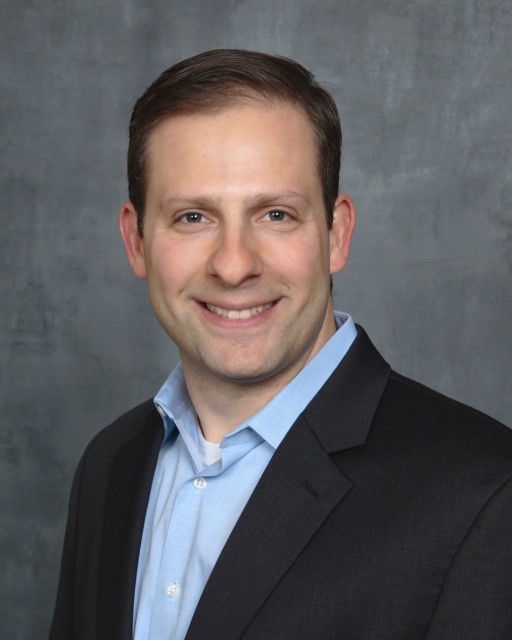Shared Services Get Strategic


A decade ago, Sam Barani was at Salesforce cobbling together the first bricks in what would become a substantial organization-within-an-organization, a centralized provider of data processing and analytical services to multiple functions like finance, sales, HR and IT.
Having finished much of what he’d set out to do, Barani is doing it again, this time at Fresenius Medical Care, a publicly traded provider of kidney dialysis treatments that tallies more than 130,000 employees in 155 countries and generates approximately $20 billion in annual revenues. With his guidance, the company is building a world class Global Business Services (GBS) center, offering comprehensive services to function leaders and the C-Suite.

“The GBS center is positioned to become a true enterprise transformation organization, driving change management across the company,” said Barani, Global Chief Business Services Officer at Fresenius. “Once manual processes across the business are digitized and come into the GBS, we can analyze data on an end-to-end enterprise basis, offering transparency into things we couldn’t see before. We’re well on the way toward having this 360-degree view of the corporation.”
That view was far from the minds of IT leaders in the 1990s when administrative and support personnel in data-intensive functions like HR, finance and IT were burdened by the sharp uptick in manual data processing tasks. The work consumed their time and attention, as well as each function’s budget. The solution was to outsource the business processing to third-party providers offering lower-cost labor arbitrage in offshore locations.
By the mid-2000s, many midsized and larger companies had signed contracts with external business process outsourcing (BPO) providers. Another productivity concept—shared services centers—subsequently emerged. Instead of jettisoning business processes to an external vendor, shared services units were formed to perform these tasks internally on a function-by-function basis. The benefits were similar: Professionals were liberated from time-consuming administrative tasks, which were performed by lower-paid employees.
The shared services model itself is now progressing. “What used to be and remains an efficient process of services has evolved into an engine of transformation and a source of competitive advantage,” said Michael Heric, a partner and global leader for Global Business Services and Shared Services at management consultancy Bain & Company.
He’s referring to a GBS center. Unlike the shared services model, which is focused on a single function like HR or IT, a GBS center comprises specialists from multiple functions.
“What makes GBS centers a step-change from shared services are the cross-functional opportunities,” said Jonathan Silver, partner and leader of the global Shared Services and Corporation Business Functions practices at management consultancy McKinsey & Company. “Using technologies like process mining to capture data from transaction systems, a GBS center is positioned to bring next-step analytics and improved data visualization into a business on an end-to-end enterprise basis.”
This is the work that Barani did back at Salesforce in 2013. His remit at the time was to deliver operational excellence to the company’s diverse functions, at scale. He began this journey by forming the GBS center to process the transactional tasks in finance. Other functions like HR, procurement and customer-facing support services soon joined finance in the GBS center, as did additional functions like sales, marketing and IT. Last to migrate over were legal and compliance.
Leveraging Salesforce’s cloud platform, the different functions benefitted from data standardization—the transformation of data flowing in from difference sources into a common format enabling users to process and analyze it. As time progressed, more data was digitized. Meanwhile, cognitive computing solutions like machine learning and advanced analytics became available.
Initially, data was analyzed at the GBS center on a function-by-function basis. By the time Barani moved on to Fresenius in April 2022, data was being analyzed on a cross-functional, end-to-end basis. Among the tools used at the GBS center were Salesforce Einstein, an AI platform combining machine learning algorithms and natural language processing (NLP) to analyze large volumes of complex data; Quip, an enabler of team-based collaborations around documents to improve productivity; and Tableau, a visual analytics business intelligence solution.
“We’d become what I’d hoped—a separate enterprise organization delivering advanced analytics to partners across the business to help solve their problems and make more insightful business decisions,” said Barani. As a provider of business intelligence, quality assurance, intelligent automation, change management, workforce organizational design and process excellence, the GBS center was perceived across the company as a crucial enabler of digital transformation.
Barani’s remit at Fresenius Medical Care is to repeat his success, from scratch. Much like at Salesforce, he wields significant influence. “The GBS center is strategic enough that my role as Chief Business Services Officer is C-level,” he said. “I’m not being asked to drive labor arbitrage by removing manual transactions here and there; I’m working closely with the board and other C-level executives to find opportunities for process efficiency, optimization and transparency.”
One such C-level peer is Fresenius’s CIO, Anjana Harve. “Anjana is my customer, in the sense that the GBS center serves her IT function processing needs,” said Barani. “She is also my partner, as we are both engaged in the company’s digital transformation. Just this morning, we discussed the roadmap for new technology next year in the GBS center. I rely on her to help me make such strategic decisions and to implement the technology solutions.”
Barani envisions the GBS center as the “backbone” of the global company, he said, given the breadth of administrative and analytical services it provides functions like IT, legal, compliance, HR and finance. At present, this work occurs on a centralized basis in the Philippines, India, Poland, Mexico, Brazil and Japan.
“We’re exploring adding other functions to the GBS that also can be run at scale, such as customer service, sales, marketing and technical services,” he said. “Anything that can be centralized and run at scale can be optimized.”
Other large publicly traded companies like retail pharmacy giant Walgreens Boots Alliance (WBA) are beginning to integrate shared services on a multi-function basis, on a path towards eventually creating a GBS center.

“We started with an IT shared services model here about three years ago, with TCS as our application support partner; that has evolved to where we subsequently entered the finance space in partnership with Genpact,” said Mark Slater, Business Services Technology Platform Information Officer (PIO) at WBA, with more than 300,000 employees and $132.5 billion in 2021 revenue.
“In terms of strategic value, we look at this as a very agile way to manage the business,” Slater said. “If we quickly need to scale for growth, we don’t suddenly need to hire a significant number of professionals across commoditized functions like IT and accounting to support it. Our third-party partners give us the opportunity to scale up or down depending on the need.”
As WBA’s Business Services Technology PIO, Slater is responsible for enabling the technologies underpinning each function’s business process needs in the shared services model. “We’ve established a transformation office within shared services to identify new opportunities to streamline and automate business processes across the functions. My job is to enable these objectives using technologies like AI and automation to optimize planned efficiencies and drive down costs,” he said.
Asked for an example, he pointed to WBA’s partnership with BlackLine, a provider of cloud-based finance and accounting services like account reconciliation, journal entry processing and accounts receivable automation.
“The name of the game for us is to bring in our third-party technology partners to provide the thought leadership and innovations we need for the shared services model to become ever more efficient and insightful, as they’re constantly creating new ways to do just that,” he said. “For example, BlackLine just announced enhancements to their intercompany management solution streamlining end-to-end intercompany operations. It’s now on our roadmap for future implementation.”
Much like BPO and shared services models, GBS centers themselves are evolving. “In some GBS centers, we’re seeing integrated multi-functional capabilities and higher-value services like RPA (robotic process automation), process mining, advanced analytics and digital twins,” said Heric. A digital twin is a virtual representation of a business process that serves as its real-time digital counterpart.
Given these sophisticated services, it is not uncommon, as Barani intimated, for a CIO and the GBS center leader to be joined at the hip. “IT and GBS increasingly are very tightly connected,” said Heric. “The history behind the GBS center was all about the shift to lower costs, but the reality is that with these benefits for the most part achieved, the future for GBS is digitizing data and automating processes on an enterprise basis. Who drives that? The CIO.”
This symbiotic relationship is evident in the career path for some GBS leaders. “We’re beginning to see situations where the head of shared services becomes the CIO or CTO, a bigger and more effective business executive,” said Silver.
As a GBS center becomes more of a strategic organization-within-an-organization, the talent needs are migrating toward people who not only mine, cleanse and process data, they are also equipped to squeeze out discerning insights from the data. “Thanks to automated technology solutions, manual processing is becoming much less, well, manual,” said Silver. “We’re seeing investments in upskilling people to use advanced analytics, RPA and other sophisticated tools.”
“Aside from this technical competence, staff also are being trained in problem-solving and communications to explain the insights they’ve gleaned in story-telling form to improve a function,” he added. “Exciting career paths are now at hand, with some GBS centers rotating people out to the business units.”
Heric concurred. “The people who come to work at a GBS center want to engage in higher value work. As more of the work they do is digitized and automated, they now have the opportunity to do some really interesting things. That’s good for another reason, since many GBS centers have endured high attrition rates,” he said, adding that manual work still occurs, “but it is becoming less and less.”
As for the professionals in business functions at companies with a GBS center or a shared services unit, they are now liberated to focus their efforts almost exclusively on the business and the company’s strategic vision.
“A finance person didn’t go to business school to spend 80 percent of their time manually collecting data, cleansing it and putting it into reports, yet that is what the average finance person is still doing, with only 20 percent spent generating business insights,” said Heric. “When you take that 80 percent and put it in a GBS, people work on the things they were trained to do and have passion for, which is where they should be spending their time.”

Chief Executive Group exists to improve the performance of U.S. CEOs, senior executives and public-company directors, helping you grow your companies, build your communities and strengthen society. Learn more at chiefexecutivegroup.com.
0

1:00 - 5:00 pm
Over 70% of Executives Surveyed Agree: Many Strategic Planning Efforts Lack Systematic Approach Tips for Enhancing Your Strategic Planning Process
Executives expressed frustration with their current strategic planning process. Issues include:
Steve Rutan and Denise Harrison have put together an afternoon workshop that will provide the tools you need to address these concerns. They have worked with hundreds of executives to develop a systematic approach that will enable your team to make better decisions during strategic planning. Steve and Denise will walk you through exercises for prioritizing your lists and steps that will reset and reinvigorate your process. This will be a hands-on workshop that will enable you to think about your business as you use the tools that are being presented. If you are ready for a Strategic Planning tune-up, select this workshop in your registration form. The additional fee of $695 will be added to your total.

2:00 - 5:00 pm
Female leaders face the same issues all leaders do, but they often face additional challenges too. In this peer session, we will facilitate a discussion of best practices and how to overcome common barriers to help women leaders be more effective within and outside their organizations.
Limited space available.

10:30 - 5:00 pm
General’s Retreat at Hermitage Golf Course
Sponsored by UBS
General’s Retreat, built in 1986 with architect Gary Roger Baird, has been voted the “Best Golf Course in Nashville” and is a “must play” when visiting the Nashville, Tennessee area. With the beautiful setting along the Cumberland River, golfers of all capabilities will thoroughly enjoy the golf, scenery and hospitality.
The golf outing fee includes transportation to and from the hotel, greens/cart fees, use of practice facilities, and boxed lunch. The bus will leave the hotel at 10:30 am for a noon shotgun start and return to the hotel after the cocktail reception following the completion of the round.